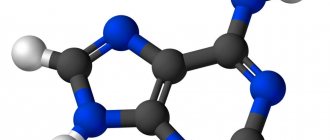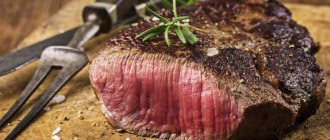The most important function of vitamin K is that it is involved in regulating blood clotting. In addition, it plays many more important roles in maintaining vital functions and protecting the body from diseases, including very dangerous ones. The importance of vitamin K is extremely great; The scientists who discovered it were awarded the Nobel Prize.
If there is a deficiency of this substance, the situation can be easily corrected by starting to use vitamin K in the form of dietary supplements. Taking them will definitely give results if the chosen drug is of high quality and used according to the recommended regimen.
Increased need for vitamin K
People who have recently suffered blood loss, serious injury, or surgery have an increased need for vitamin K. The consumption of the substance increases, and the need for additional use of vitamin K often arises with a simultaneous lack of vitamins C and PP.
To some extent, the need for the vitamin increases in women during the period before childbirth. However, they do not need to take special vitamin K.
In the body of pregnant women in later stages, even without this, a number of changes occur that lead to an increase in blood clotting.
Spinach (483 mcg per 100 g)
There is a reason why this green leafy vegetable is called one of the healthiest foods in the world. Spinach helps digestion, contains a large amount of vegetable protein, speeds up metabolism, improves vision by saturating the body with vitamin A. And it also contains a huge amount of vitamin K.
Vitamin champions. 6 healthiest spices Read more
Absorption of vitamin K from food
Vitamin K is best absorbed from foods in the presence of fats and bile. Since most foods that contain vitamin K contain almost no fat, it is important to plan your diet correctly: serve fresh vegetables with fatty meats or season vegetable salads with vegetable oil.
Also, the absorption of vitamin K, like other fat-soluble vitamins, increases if a person follows a constant diet and eats at the same hours. This helps the body develop a conditioned reflex: when the time for the next meal approaches, the digestive glands secrete enzymes, including the active secretion of bile. This improves the quality of digestion and absorption of vitamin K.
Vitamin K (phylloquinone) is a fat-soluble vitamin necessary for blood clotting and bone mineralization.
Synonyms Russian
Antihemorrhagic vitamin, 2-methyl-3-phytyl-1,4-naphthoquinone, coagulation vitamin, antihemorrhagic vitamin, phytonadione.
English synonyms
Phytonadione, menaphthone, vitamin Kj, Vit K.
Research method
High performance liquid chromatography-mass spectrometry (HPLC-MS).
Units
ng/ml (nanograms per milliliter).
What biomaterial can be used for research?
Venous blood.
How to properly prepare for research?
- Do not eat for 2-3 hours before the test; you can drink clean still water.
- Do not smoke for 30 minutes before the test.
General information about the study
Vitamin K is a fat-soluble vitamin and exists in three structural variants: vitamin K1 (phylloquinone), K2 (menaquinone) and K3 (menadione). In addition to differences in the structure of the molecule, phylloquinone and menaquinone differ in the source of entry into the body.
Phylloquinone is found in foods of plant and animal origin. Large amounts of phylloquinone are found in green vegetables (Brussels sprouts, cabbage, lettuce, spinach, parsley) and vegetable oils (olive and sunflower oils). Phylloquinone is the main form of vitamin K obtained from food.
Unlike phylloquinone, menaquinone does not come from the outside, but is produced in the intestine by microflora. In the ileum, under the influence of bile acids and salts, both forms of vitamin K are absorbed, and the main organ where they are stored is the liver. Less lipophilic phylloquinone is easily mobilized from liver tissue and is actively consumed in metabolic processes. Accordingly, phylloquinone is also the predominant form of vitamin K present in blood serum.
Several factors, such as age, gender, menopause, affect the metabolism of vitamin K. Phylloquinone reserves in people over 60 years of age are less than in younger people (under 40 years of age). In addition, there are genetic features of vitamin K metabolism. Thus, in patients who are carriers of the E2 polymorphic variant of the ApoE gene, it is slower. This should be taken into account when prescribing coumarin preparations for the treatment of hypercoagulable states (characterized by increased blood clotting).
Vitamin K was originally called k oagulations vitamin - this is how the Danish scientist named the substance he discovered that is necessary for blood clotting, namely for the gamma-carboxylation of blood clotting factors II, IV, IX and X, as well as the natural anticoagulants protein C and protein S. Gamma-carboxylated factors have a unique ability to bind blood coagulation factor IV - calcium ions. The process of gamma carboxylation is carried out by hepatocytes. In the absence of vitamin K, a deficiency of these coagulation factors occurs, which is manifested by increased bleeding.
Despite the fact that every day about 60-70% of phylloquinone ingested from food is excreted from the body in urine or bile, vitamin K deficiency is quite rare. This is due, first of all, to the presence of this vitamin in many foods and the reserves of the vitamin in the liver. Vitamin K deficiency in the vast majority of cases is caused by impaired absorption in the small intestine. Such disorders accompany diseases such as celiac disease, Crohn's disease, Whipple's disease, cystic fibrosis, as well as the condition after resection of the terminal ileum. In chronic pancreatitis, lipase deficiency leads to impaired breakdown of fats into molecules of fatty acids and monoglycerides, which significantly impedes the absorption of fat-soluble vitamins, including vitamin K. A similar situation occurs with hypergastrinemia: in this case, excess gastrin stimulates the production of large amounts of hydrochloric acid in the stomach, which inactivates pancreatic lipase. Therefore, in patients with duodenal ulcers, antral gastritis and Zollinger-Ellison syndrome, vitamin K absorption is reduced. In diseases of the liver and gall bladder, the production and secretion of bile, necessary for the absorption of vitamin K, is impaired, so that in chronic hepatitis and cirrhosis of the liver, chronic cholangitis and cholecystitis, the absorption of vitamin K is also reduced. A lack of bile acids and salts is also observed with intestinal dysbiosis. In this case, microorganisms use bile acids to carry out their own metabolic processes before the bile enters the terminal ileum. The lipid-lowering drug cholestyramine binds excess cholesterol and bile acids in the intestine, which also impedes the absorption of vitamin K. A rare genetic disease, abetalipoproteinemia, is accompanied by impaired transport of fats from the intestine to the lymph, and then into the systemic circulation, while the transport of vitamin K is also impaired.
Vitamin K deficiency can be suspected with frequent nosebleeds, menorrhagia and metrorrhagia, ecchymosis, late bleeding in the postoperative period (for example, after tooth extraction), spontaneous or hemorrhage that develops against the background of minimal trauma in the joint, muscle and retroperitoneal cavity. It should be noted that such symptoms are characteristic not only of vitamin K deficiency. On the contrary, these manifestations occur in all diseases accompanied by qualitative or quantitative changes in blood coagulation factors and fibrinolysis. For the differential diagnosis of coagulopathies in clinical practice, prothrombin time and activated partial thromboplastin time (aPTT) tests are most often performed. Their disadvantage is that they are indirect methods for assessing the deficiency of certain factors; they suggest, but do not confirm, vitamin K deficiency as the cause of increased bleeding. To confirm vitamin K deficiency, directly measure the concentration of phylloquinone in the blood serum.
With the help of vitamin K, the bone protein osteocalcin matures. Osteocalcin is synthesized by osteoblasts and is capable of binding calcium ions, which ensures calcification of newly formed bone. For the synthesis of active osteocalcin, as well as for the synthesis of blood coagulation factors, a gamma-carboxylation reaction is required, which occurs only in the presence of vitamin K. With vitamin K deficiency, gamma-carboxylation of osteocalcin does not occur, which is accompanied by a decrease in bone tissue mineralization. Therefore, vitamin K deficiency contributes to the development of osteoporosis. High prepubertal phylloquinone levels are associated with high bone density in healthy girls. During the period of active growth and formation of bone tissue, sufficient intake of vitamin K is necessary to prevent osteoporosis. In old age, vitamin K deficiency increases the rate of bone resorption. For example, dietary vitamin K intake of less than 109 mcg/day increases the risk of hip fracture. Conversely, more than 250 mcg/day reduces the risk of hip fracture. On average, the daily diet of a young person contains about 80 mcg of vitamin K, which generally corresponds to accepted dietary recommendations (the recommended amount is 1 mcg/kg/day). The content of phylloquinone in the diet of older people who eat a lot of flour products and few green vegetables is often at the lower limit of the norm. Despite the fact that clinically detectable coagulopathy does not develop at this level of vitamin K intake, this amount is not enough for complete mineralization of bone tissue. This condition is considered a subclinical vitamin K deficiency. Timely diagnosis and treatment of subclinical vitamin K deficiency improves the condition of bone tissue. Therefore, determining the concentration of vitamin K is used to assess nutritional status, for a comprehensive assessment of bone tissue conditions and the development of individual dietary recommendations.
What is the research used for?
- To find out the cause of increased bleeding.
- For the prevention, timely diagnosis and treatment of osteoporosis, especially in the prepubertal period and in old age.
- For a comprehensive assessment of the content of vitamins and microelements.
- To develop individual dietary recommendations taking into account age, gender, hormonal status, as well as some genetic characteristics of metabolism.
When is the study scheduled?
- For diseases of the gastrointestinal tract - small intestine and pancreas, as well as liver and gall bladder - accompanied by malabsorption of fats and fat-soluble vitamins.
- For symptoms of increased bleeding: frequent nosebleeds, menorrhagia and metrorrhagia, ecchymosis, late bleeding in the postoperative period, spontaneous or hemorrhage developed against the background of minimal trauma in the joint, muscle and retroperitoneal cavity.
- In the presence of risk factors for osteoporosis: postmenopause, old age, consumption of large amounts of alcohol and coffee, sedentary lifestyle, deficiency of calcium salts and vitamin D, etc.
- For compression fractures of the vertebrae, “fracture of the radius in a typical location,” fracture of the femoral neck, as well as spontaneous or caused by minimal trauma fractures of any other location.
- When developing individual dietary recommendations.
What do the results mean?
Reference values
| Age | Reference values |
| Concentration | 0.13-3.37 ng/ml |
| 2-18 years | 0.13-1.39 ng/ml |
| > 18 years old | 0.13-1.88 ng/ml |
Reasons for increased vitamin K levels:
- high content of green vegetables in the diet;
- high fat content in the diet;
- hypertriglyceridemia due to alcohol consumption, oral contraceptives, diabetes mellitus, chronic renal failure, use of hypothiazide and beta blockers.
Reasons for low vitamin K levels:
- low content of green vegetables in the diet;
- intestinal diseases affecting the small intestine - celiac disease, Crohn's disease, Whipple's disease, cystic fibrosis - as well as the condition after resection of the terminal ileum;
- liver diseases: chronic hepatitis, post-infectious and alcoholic cirrhosis;
- gallbladder diseases: chronic cholangitis and cholecystitis;
- chronic pancreatitis;
- duodenal ulcer, antral gastritis, Zollinger-Ellison syndrome;
- intestinal dysbiosis;
- use of cholestyramine;
- abetalipoproteinemia;
- elderly and senile age, postmenopause;
- use of coumarin drugs (warfarin).
What can influence the result?
- Concentration of phylloquinone transporting lipoproteins: in patients with high concentrations of chylomicrons and VLDL, phylloquinone levels are increased.
- Age: the lowest rates were found in men and women 30-40 years old and older people.
- The level of phylloquinone is higher in carriers of the E2 polymorphic variant of the ApoE gene.
- The result of the study depends on the intake of phylloquinone from food: the absence of green vegetables in the diet for 3 weeks is accompanied by a decrease in phylloquinone concentration by 50%.
Biological role of vitamin K
The functions of vitamin K are varied. He:
- Is a blood clotting factor, increases the ability of blood to form clots and blood clots in case of wounds.
- Strengthens blood vessels, makes capillaries less fragile, supports the protective properties of arteries, and resists the deposition of harmful cholesterol in them
- Increases bone strength as it improves calcium absorption and its effects in the body
- Helps the body obtain energy from nutrients
- Improves kidney function
- Improves the functioning of the digestive organs
- Has a beneficial effect on the functioning of the muscular system.
There is evidence that adequate dosages of vitamin K protect the body from the formation of atypical (cancer) cells in it.
Why is it needed?
- Regulates blood clotting. Vitamin K transports calcium throughout the body. And thanks to this, it regulates blood clotting. Here's the other side: too much vitamin K can thicken the blood and promote blood clots. - Strengthens bones. Vitamin K is needed to absorb calcium from everyday foods, so a deficiency can cause brittle bones and a lack of calcium in the body. — Promotes normal functioning of the immune system. - Participates in protein synthesis.
— Important for the prevention of diabetes. Vitamin K plays an important role in regulating blood sugar levels.
On guard of beauty. What vitamins does your skin need and how to take them? Learn more
Signs of excess vitamin K
Under natural conditions, that is, when receiving vitamin K from food, it is difficult to achieve hypervitaminosis. However, there are many high-dose vitamin K preparations, the use of which can be dangerous. An overdose of these drugs can cause dangerous conditions, such as an allergic reaction, hypercoagulation (clotting) of blood in the vessels, and destruction of red blood cells.
It is important to note that this is possible when taking vitamin K medications, and dietary supplements containing it include safe doses of the vitamin, so their use is harmless.
Vitamin K1, K2 and K3 - what's the difference?
Vitamin K1 - phylloquinone. Vitamin K1 comes from plant foods, such as leafy green vegetables. Of the entire group, approximately 75-90% of this particular element enters the body. Research shows that vitamin K1, which is found in plants, is poorly absorbed. Of the total amount, the body absorbs only 10% of the active vitamin compound [1]. Better absorption of phylloquinone is ensured by simultaneous consumption of vegetables with certain fats.
Vitamin K2 is divided into several subtypes - menaquinones (MK). Each of them differs in the length of the side chain from MK-4 to MK-13. Sources of vitamin K2 are animal products and fermented foods. The issue of vitamin K2 absorption by the body continues to this day. There is an expert opinion that if K2 is contained in foods with fats, then it is absorbed better, since it has a fat-soluble structure.
Vitamin K3 - menadione - is an artificially synthesized water-soluble analogue of vitamin K. The drug is actively used in veterinary medicine. Human studies have shown that vitamin K3 is harmful. Its effect on the body caused damage to liver tissue and destruction of red blood cells. In this regard, menadione is not prescribed as a prophylactic agent in the form of nutritional supplements. It is used only in the treatment of certain pathologies strictly under medical supervision.
Why does vitamin K deficiency occur?
The following factors contribute to hypovitaminosis K:
- Poor nutrition. If there are few fresh vegetables and fruits in the food, if home-cooked food is replaced in the diet with semi-finished products, then a deficiency of vitamin K is very likely. Unfortunately, these errors in diet are very common, which leads to a high incidence of vitamin K deficiency in modern people who neglect their diet.
- Diseases of the digestive system. People with diseases of the liver, gall bladder and small intestine are especially susceptible to hypovitaminosis.
- Microflora disorders. Part of vitamin K is produced by bacteria that are part of the intestinal flora, so even hidden disorders of the microflora can cause vitamin K deficiency.










